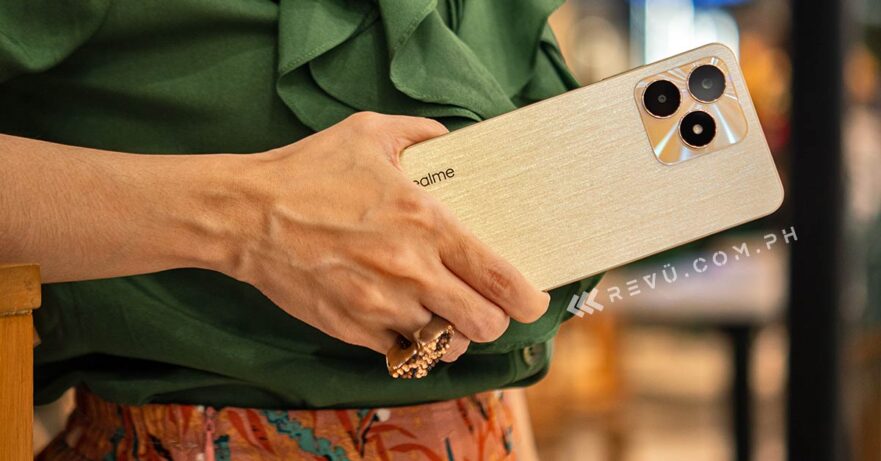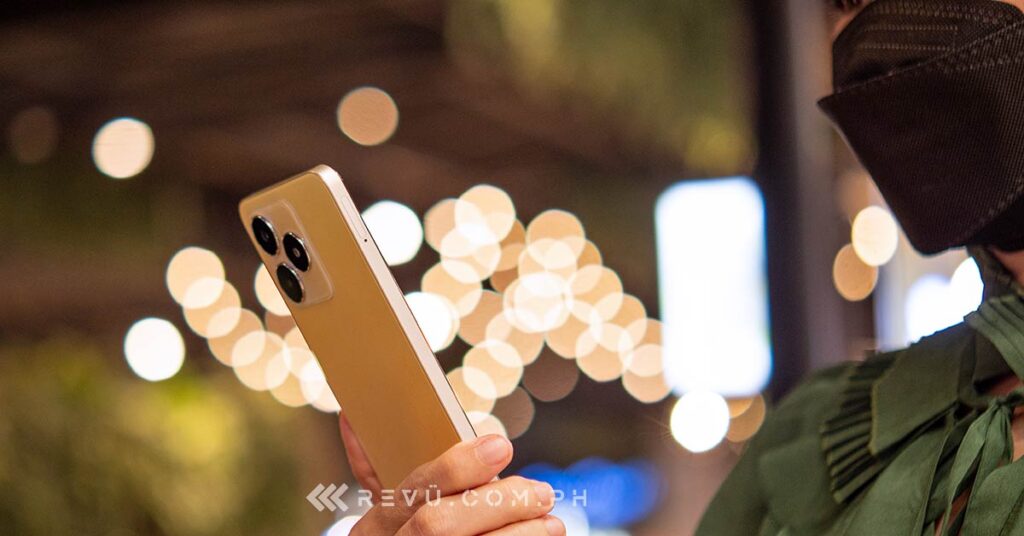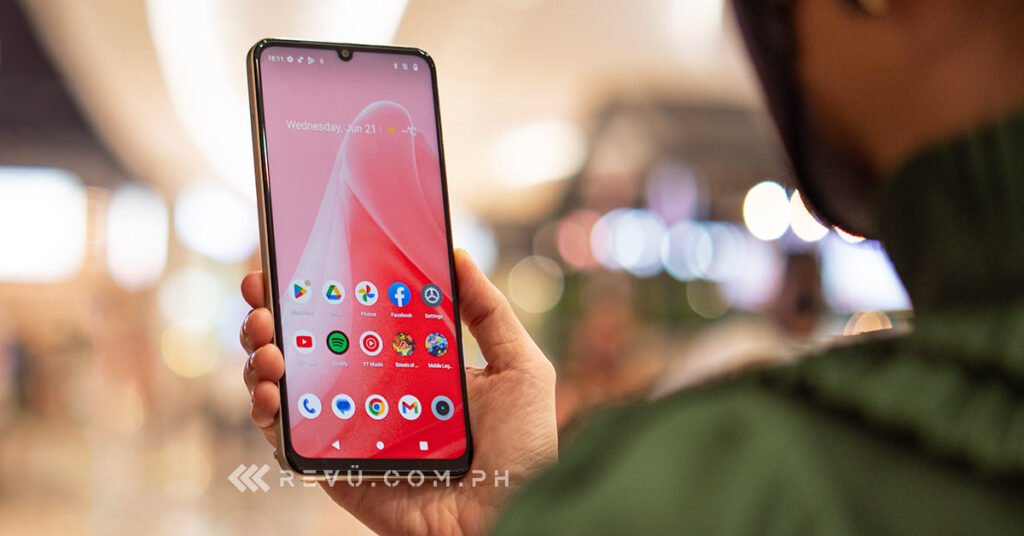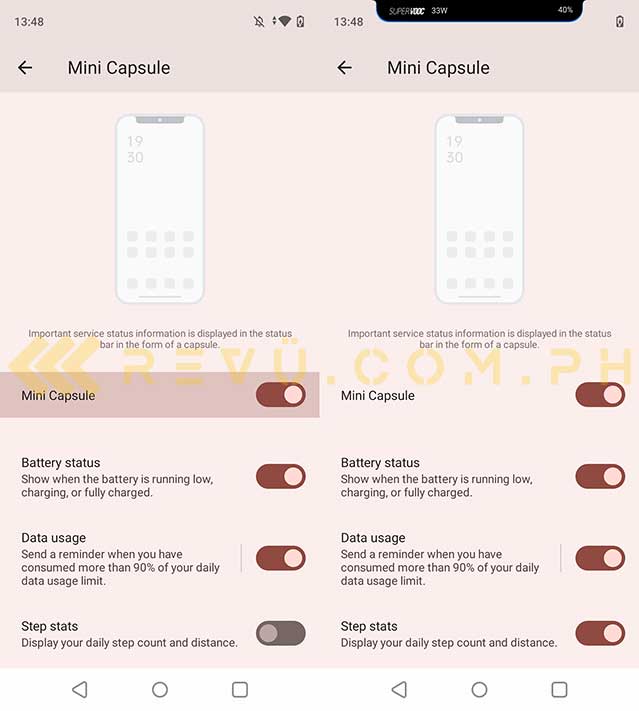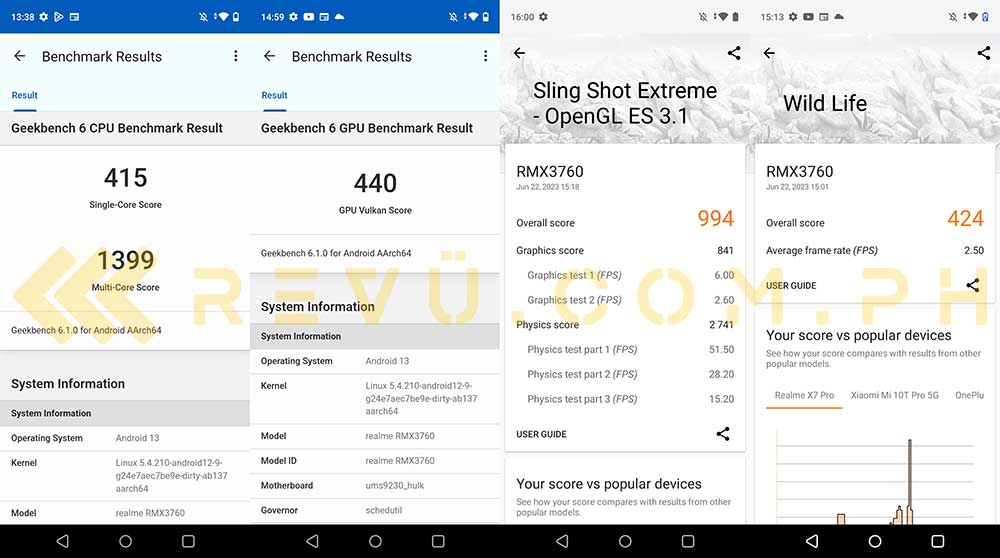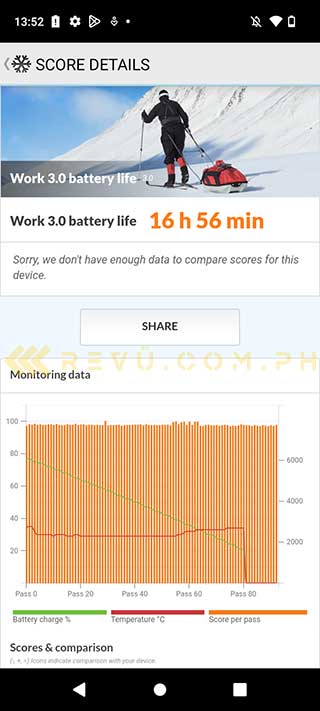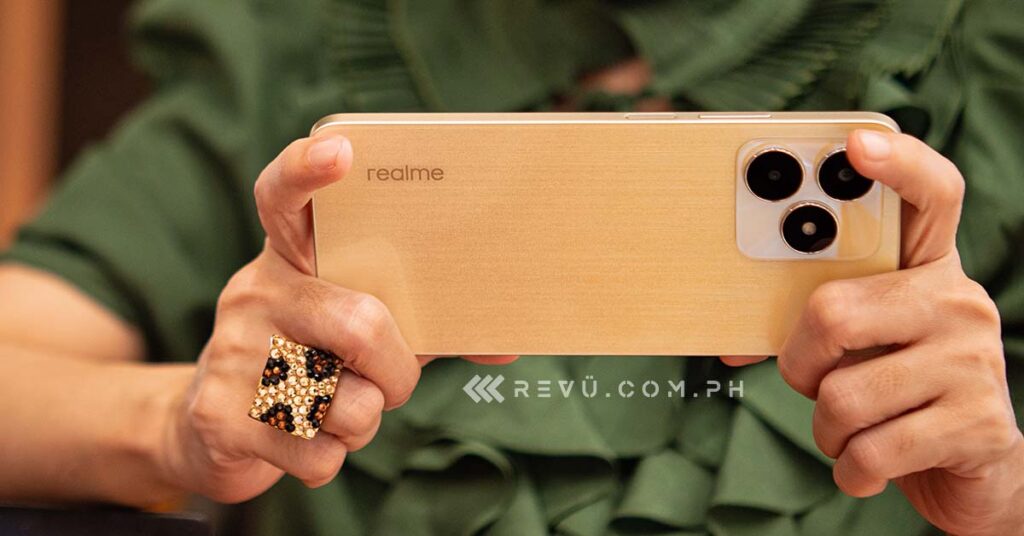After weeks of teasing, the realme C53 is finally official in the Philippines. The latest realme smartphone arrives as a more wallet-friendly alternative to the C55, which we reviewed earlier and was the first device we tested that comes with an iPhone-like Dynamic Island feature on its panel.
The realme C53 inherits the Mini Capsule display of the C55, but there’s plenty more to it that makes it an interesting proposition, especially if aesthetics is among your top priorities.
Though labeled as a budget contender, the newly launched handset boasts a design you’ll rarely see in its price range. It looks more expensive than it actually is, sporting a rectangular frame with chamfered edges and a smooth back side that features a modern square-ish camera layout with three rings.
Short realme C53 unboxing video we posted a week ago
The rear panel of the Champion Gold color variant, which we used for this review, is particularly eye-catching. According to the realme website: “A golden ribbon runs through the back of the phone, while a golden glow surrounds the phone, capturing the glory of the winning moment.” True enough, the back really does look like it has been lined with a shiny golden ribbon that shimmers as light bounces off the flat surface.
The same flair extends to the camera module, which has a prism-like effect when it catches light from different angles, adding another touch of premium to the design. The three rings on the rear each has a gold outline to match the rest of the body, though keep in mind that only two house camera sensors. The ring positioned on the right-hand side of the camera island packs a flash module.
It’s rare to see a device that looks this glitzy and classy in the budget space, so it’s easy to recommend the Champion Gold model we’re using if you find it appealing. The fact that the smartphone’s glossy surface doesn’t pick up fingerprints and smudges like crazy is icing on the proverbial cake.
The realme C53 is also notably slim for an entry-level model, let alone one housing a 5,000mah battery. It measures just 7.49mm in thickness and weighs 182 grams, so handling isn’t much of a problem despite its sizable display. The physical buttons are located along the right side of the device and include a fingerprint sensor under the power key. This makes unlocking the realme C53 easier, especially when you’re wearing a mask.
As usual, you’ll find the USB-C charging port at the bottom, sandwiched by the lone speaker grill and 3.5mm standard headphone jack, a treat at this price point considering how many phones these days have no legacy audio out. However, also note that the realme C53 doesn’t ship with a set of wired earphones in the box.
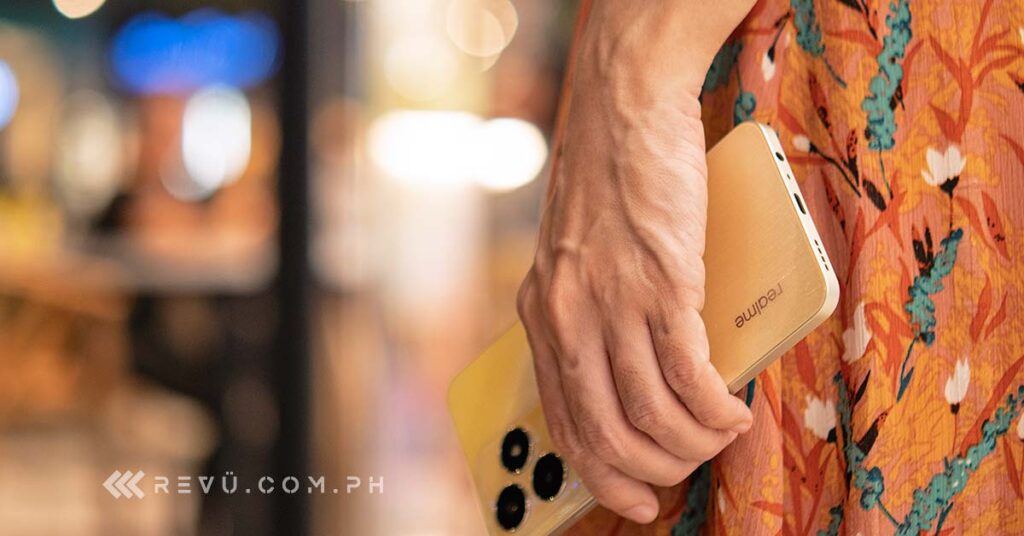
Unlike most of the competition, the realme C53 supports the SuperVOOC charging standard, allowing it to hit up to 33 watts when plugged in
Like most wallet-friendly handsets nowadays, the realme C53 arrives with a 5,000mAh battery and fast charging out of the box. Unlike most of the competition, though, it supports the SuperVOOC charging standard, allowing it to hit up to 33 watts when plugged in. This translates to a full charge from a dead battery in roughly 70 minutes, which is a respectable charging time for even a mid-tier unit.
Up front, the LCD panel with a U-shaped camera cutout is 6.74 inches and offers a 720p resolution, though the realme C53 only carries Widevine L3 certification, meaning you won’t be able to stream DRM-licensed content at high resolution on apps like Netflix and Amazon Prime Video.
You also get refresh rates of up to 90Hz, but you’ll need to set the Screen Refresh Rate setting to Auto for the display to refresh 90 times per second and display smoother visuals. There’s no option to lock it at 90Hz. Setting the screen to Auto provides a much smoother experience at the expense of slightly faster battery drain, but don’t expect games to run above 60 fps due to the phone’s limited CPU and GPU power.
The screen is decent and gets fairly bright outdoors in auto-brightness mode, with the panel capable of hitting a peak brightness of 560 nits, according to realme. The chin is a bit of a bother, but the rest of the bezels are not.
Just like the C55, which debuted in the Philippines last April, the realme C53 sports realme’s iPhone-like Dynamic Island feature on its panel. The Mini Capsule, as the brand calls it, sits on the selfie-camera cutout and can show the device’s charging status, low battery alerts, step count, and walking distance, among other things.
Unlike the Dynamic Island, though, the Mini Capsule isn’t interactive and doesn’t change form to show you different types of active notifications, making it seem non-existent or extremely limited for the most part. Hopefully, future updates will allow users to see and interact with messages to make it actually useful in day-to-day use.
The realme C53 has a 50-megapixel camera around the back for taking pictures and videos. The main camera is accompanied by an AI sensor that helps with portrait shots. You get an 8-megapixel camera for selfies, too. realme doesn’t bill the C53 as a camera-focused phone, and we can see why after taking a few camera samples with our unit.
The phone suffers from a bit of shutter lag even in the default Photo setting, while the autofocus and exposure are not as reliable as we would like them to be. Portrait mode is also aggressive with its artificial blur for our liking, so we had to manually tone down the background-blur effect to get some decent, if not soft-looking, results.
Sample shots. Click on the gallery to see the full images
We also found the HDR and Night modes lacking. As a result, the exposure and dynamic range can sometimes be inconsistent, resulting in underexposed images with crushed shadows or overexposed shots with bright highlights. We’ve seen higher-quality pictures out of similarly priced models before, so we can’t pin the blame on the price tag in this case.
The lack of an ultrawide secondary option is unfortunate as well, but this is actually easy to overlook given the smartphone’s entry-level pricing. As for the front-facing camera, the realme C53’s 8-megapixel shooter performs well enough for social media, particularly when shooting portrait-style selfies with one or two subjects.

Sample selfies. The 8-megapixel front camera performs well enough for social media, particularly when shooting portrait-style selfies with one or two subjects
A Unisoc Tiger T612 budget chipset powers the realme C53, coupled with 6GB of LPDDR4X RAM and 128GB of storage, which is expandable up to 2TB via the microSD card slot. If you’re not familiar, the T612 uses a 12nm process and has two Cortex-A75 performance cores and six Cortex-A55 cores for low-level tasks. For graphics, the chip is equipped with a Mali-G57 GPU.
It performs just fine for casual games, but struggles while running certain resource-intensive applications. At one point, we had to restart our unit after experiencing severe performance issues while running a benchmark app.
While the realme C53 isn’t a powerhouse by any means, it is a marathon champ that can last up to two full days of mixed usage on a single charge — or maybe even longer if you don’t use the screen a whole lot. If you stick to basic tasks, the device will last an entire weekend before needing to be plugged in.
Final thoughts
The realme C53, just like the realme C55 before it, is a pretty good all-rounder that looks great and performs admirably in the hand. The battery life is superb as well. If aesthetics is important to you, few other smartphone models at this price can make as good an impression as the handset’s Champion Gold color variant.
In the Philippines, the realme C53 is priced at P7,999 (around $144 converted) for the version with 6GB of RAM and 128GB of expandable storage. But you can purchase it on June 23 on TikTok or Lazada with a P1,000 ($18) discount.
realme C53 specs
- 6.74-inch LCD display, HD+ resolution, 90Hz refresh rate, 560 nits peak brightness
- 12nm Unisoc Tiger T612 4G processor
- Mali-G57 GPU
- 6GB LPDDR4X RAM
- 128GB expandable storage
- Dual 50-megapixel main, portrait rear cameras
- 8-megapixel front camera
- Side fingerprint reader
- 5,000mAh battery with 33-watt USB-C charging
- realme UI T Edition based on Android 13
- Color options: Champion Gold and Mighty Black
Share this Post


